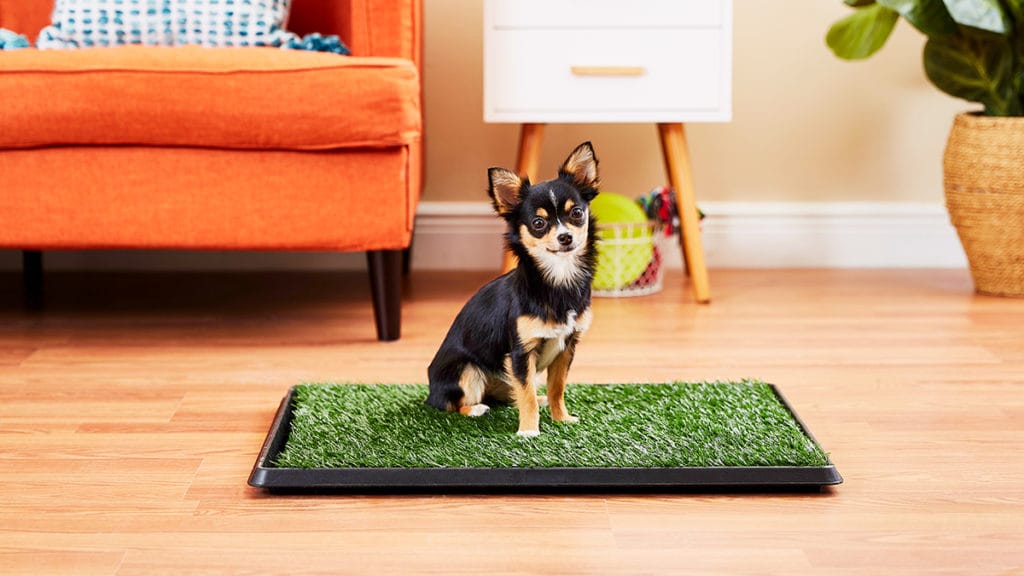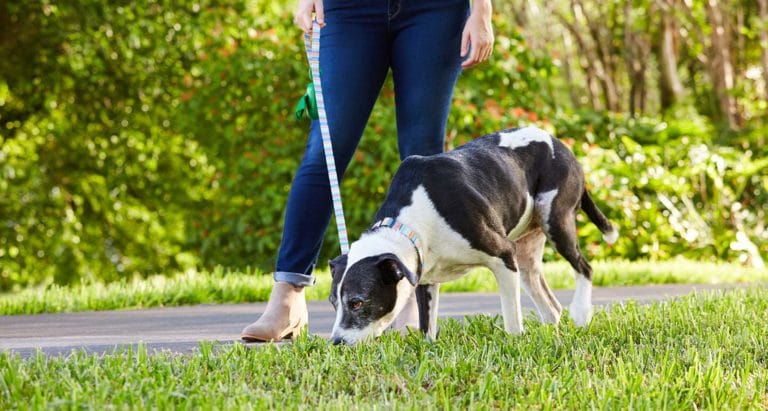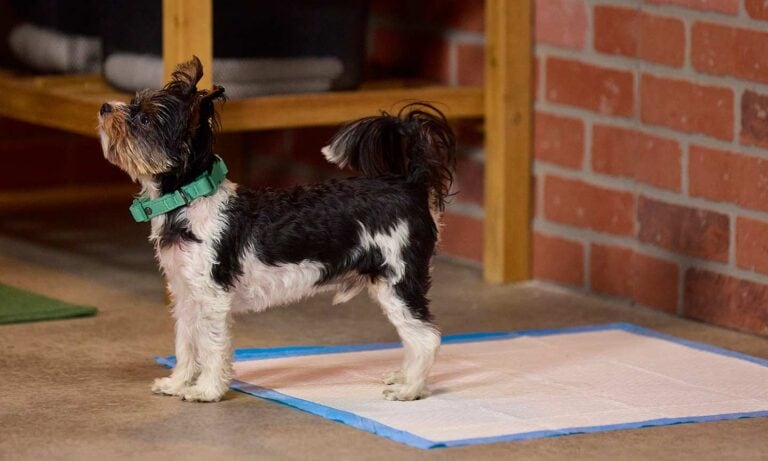House-training a puppy is hard enough without trying to tackle potty training in the winter. During the cold winter months, getting your dog to go outside at all may be a struggle.
While it’s true that, yes, it might be more difficult to start house-training a puppy in the winter, it’s certainly not impossible. For a little advice on how to potty train a dog when the weather gets cold, we turned to Anthony Bracciante, owner of Sit Means Sit Denver Dog Training. “We’ll mostly see [an aversion to colder weather] in condo, apartment or high-rise dogs, or smaller breeds,” Bracciante says. “Often they’re more used to the comforts and warmth of home, and they don’t have a yard to explore and acclimate in.”
If for whatever reason your pup is one of those who hates the cold weather, try some of Bracciante’s tips on how to house-training a puppy during the winter.
Tip 1: Take Your Dog Out, Don’t Just Put Him Out
For dogs that are sensitive to the cold or snow, you’ll need to be more involved to drive the process. You may be thinking that they know what they’re doing out there, but in actuality, they’re preoccupied with the weather, says Bracciante. “If you can clear an area and always bring the dog to that same area, it will smell like a restroom,” he suggests. “And give them a verbal command as well. Both of those things will stimulate the dog to eliminate.”
Tip 2: Be Prepared
It might seem obvious, but being prepared at a moment’s notice to take your dog out when he’s ready is a big part of house-training a puppy. During the winter, it’s a good idea to have your leash (with waste bags attached) in a basket by the door or on a leash holder so you can grab and go as needed. “Make sure you have a coat and shoes handy near the door so you can be ready quickly if you’re in the process of housebreaking,” recommends Bracciante.
Tip 3: Stay Calm
Bracciante says it’s important to not make a big deal out of the process of taking your dog outside to go to the bathroom, even if he seems to not enjoy it. “Don’t buy the drama,” he says. “Just clear a path and lead, and expect the dog to go out with you. If you accommodate them, they may manipulate you.” On the other hand, it’s important to be reasonable, Bracciante adds. Don’t expect your tiny puppy to wade through the snow. Instead, do what you can to make it as easy as possible for him to go outside, like clearing a path and creating a “restroom” area. “Be mindful, too that once the temperature dips below about 20 degrees, it can start to affect the dogs’ pads on their feet,” he adds. “Salt on the sidewalks or roadways can also affect them.” To keep your dog’s paws protected in the cold weather, make sure to pick up some dog booties like Pawz Waterproof Dog Boots.
Tip 4: Consider an Alternative
If it’s really a struggle to get your dog to go out in the winter, weigh your options to decide if the fight is worth it. Bracciante suggests using a litter box for a short time as an alternative for those dogs that just really hate the cold. Litter like Secondnature Dog Litter is highly absorbent, non-toxic and odor-controlling, so it’s great for indoor use. On the other hand, a puppy patch mimics the look and feel of real grass, which attracts dogs to use it.
Tip 5: Keep It Fun
Even when it’s cold outside, try to have some fun with your puppy so she won’t dread doing the deed in the snow. “Keep it short at first,” says Bracciante. “If the dog is successful going out and using the bathroom and coming right back in, that’s a good start. Once they know to take care of business, then you can try to extend the time outside to acclimate the dog to the weather and start enjoying or exploring more.”
With a little prior planning, it’s definitely possible to start or continue house-training a puppy in the winter. Once you succeed, you can relax and spend quality time playing with your pup in the snow!
Share:















